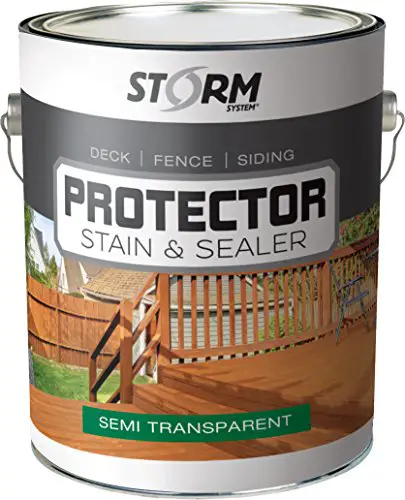What Oil is Best for Wood Cutting Boards : Top-Rated Oils for Ultimate Protection
Wood cutting boards are a beautiful and practical addition to any kitchen. They provide a sturdy surface for cutting and chopping, and with proper care, they can last for many years. One essential aspect of maintaining wood cutting boards is keeping them well-oiled. Oiling not only helps to preserve the wood and prevent it from drying out, but it also creates a barrier that repels water and bacteria.
When it comes to choosing the best oil for wood cutting boards, there are several options available, each with its own pros and cons. In this article, we’ll explore some of the most popular oils used for treating wood cutting boards and discuss their features to help you make an informed decision.
Mineral Oil
Mineral oil is a popular choice for treating wood cutting boards. It is a food-safe, odorless, and colorless oil that is derived from petroleum. Because it doesn’t turn rancid, it provides long-lasting protection to the wood. Mineral oil is also readily available in most drugstores and kitchen supply stores, making it a convenient option for many people.
One of the downsides of mineral oil is that it sits on the surface of the wood and needs to be regularly reapplied, especially for new cutting boards. Additionally, some people prefer to avoid petroleum-based products in their kitchen, making mineral oil a less attractive option for them.
Beeswax and Mineral Oil Blends
Blends of beeswax and mineral oil have gained popularity for treating wood cutting boards. This combination offers the benefits of both ingredients, as mineral oil penetrates and conditions the wood while beeswax provides a protective layer on the surface. The beeswax also gives the wood a subtle sheen, enhancing its natural beauty.
Beeswax and mineral oil blends are relatively easy to apply and provide a good level of water resistance. However, similar to plain mineral oil, they may require frequent reapplication to maintain optimal protection.

Credit: steelmadeusa.com
Coconut Oil
Coconut oil has become increasingly popular as a natural alternative for treating wood cutting boards. It is a plant-based, food-safe oil that offers antibacterial properties and a pleasant, tropical aroma. Coconut oil is also known for its ability to deeply penetrate the wood, helping to nourish and protect it.
While coconut oil is an excellent choice for conditioning wood, it may not offer the same level of water resistance as mineral oil or beeswax blends. This means that cutting boards treated with coconut oil may need more frequent reapplication, especially in high-use environments.
Walnut Oil
Walnut oil is another natural oil that is suitable for treating wood cutting boards. It is derived from the nuts of the walnut tree and is known for its rich, nutty aroma. Walnut oil is high in polyunsaturated fats, which makes it less likely to turn rancid compared to some other oils.
One potential drawback of walnut oil is its allergenic properties. Individuals with nut allergies should avoid using walnut oil on cutting boards to prevent any potential allergic reactions. Additionally, like coconut oil, walnut oil may not provide as strong a water barrier as mineral oil or beeswax blends.
How to Apply Oil to Wood Cutting Boards
Regardless of the type of oil you choose, the process of applying it to wood cutting boards is generally the same. Here’s a simple guide to oiling your cutting board:
- Clean the cutting board thoroughly and allow it to dry completely.
- Using a clean, soft cloth, apply a generous amount of oil to the entire surface of the cutting board, including the sides and edges.
- Allow the oil to penetrate the wood for at least a few hours, or preferably overnight.
- Wipe off any excess oil with a dry cloth.
- Repeat the process several times, especially for new cutting boards, until the wood stops absorbing the oil.
Following these steps will help ensure that your wood cutting board is adequately moisturized and protected.
Frequently Asked Questions For What Oil Is Best For Wood Cutting Boards : Top-rated Oils For Ultimate Protection
What Type Of Oil Should I Use For My Wood Cutting Board?
For wood cutting boards, it’s best to use food-grade mineral oil or cutting board oil.
How Often Should I Oil My Wood Cutting Board?
You should oil your wood cutting board at least once a month or whenever it appears dry.
Can I Use Olive Oil To Oil My Wood Cutting Board?
You can use olive oil, but it may become rancid over time and affect the taste of food.
Are There Any Alternatives To Mineral Oil For Wood Cutting Boards?
Yes, you can use food-grade coconut oil or almond oil as alternatives.
Conclusion
Choosing the best oil for wood cutting boards ultimately comes down to personal preference and lifestyle. While mineral oil is a classic choice for its accessibility and long-lasting protection, natural alternatives like coconut oil and walnut oil offer their own unique benefits. Regardless of the oil you choose, regular maintenance and reapplication are essential to keep your wood cutting board in top condition.
Remember that preserving and caring for your wood cutting board not only enhances its longevity but also maintains a safe and hygienic surface for food preparation. So, take the time to select and apply the right oil, and your wood cutting board will continue to serve you well for years to come.





